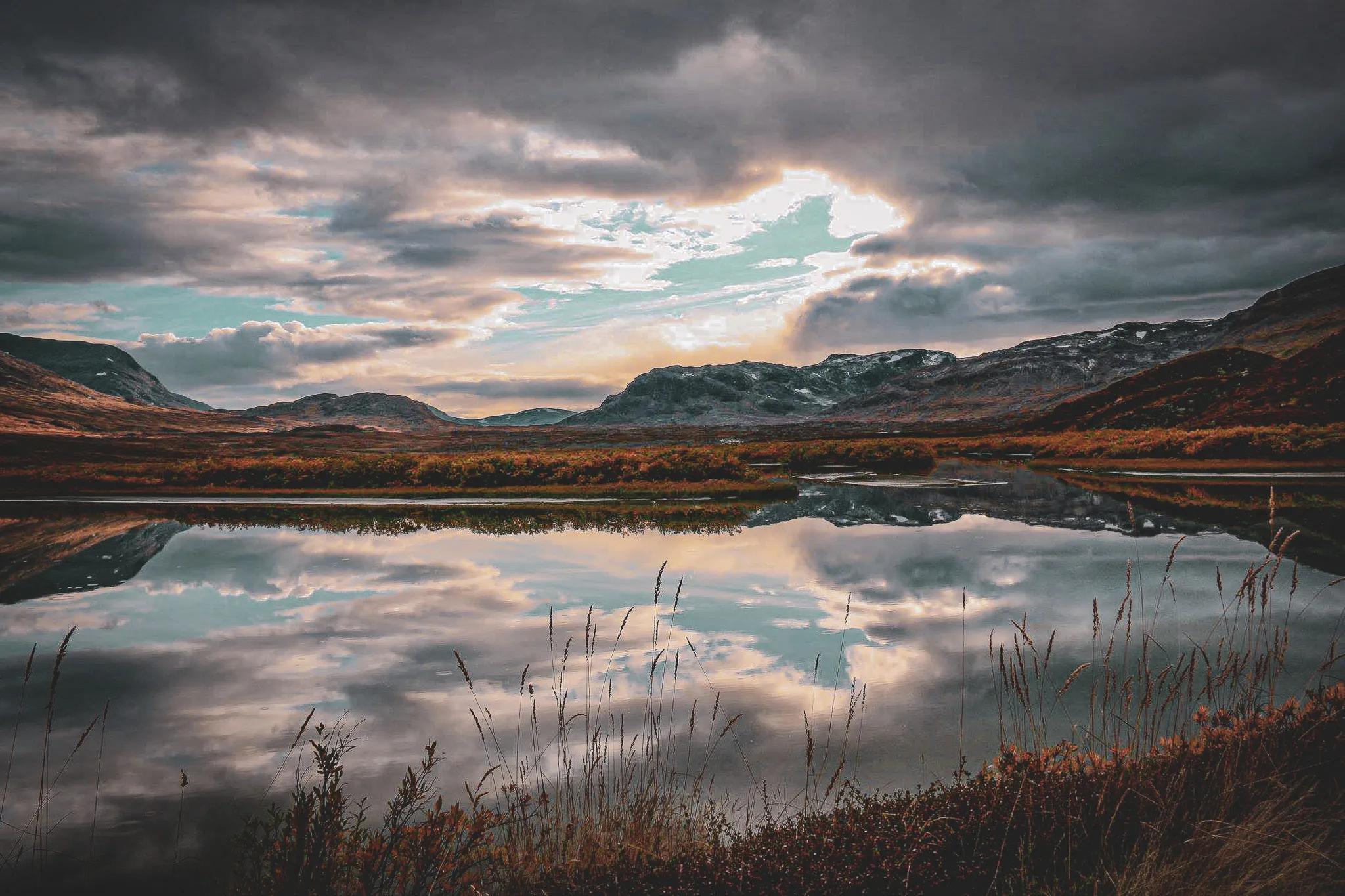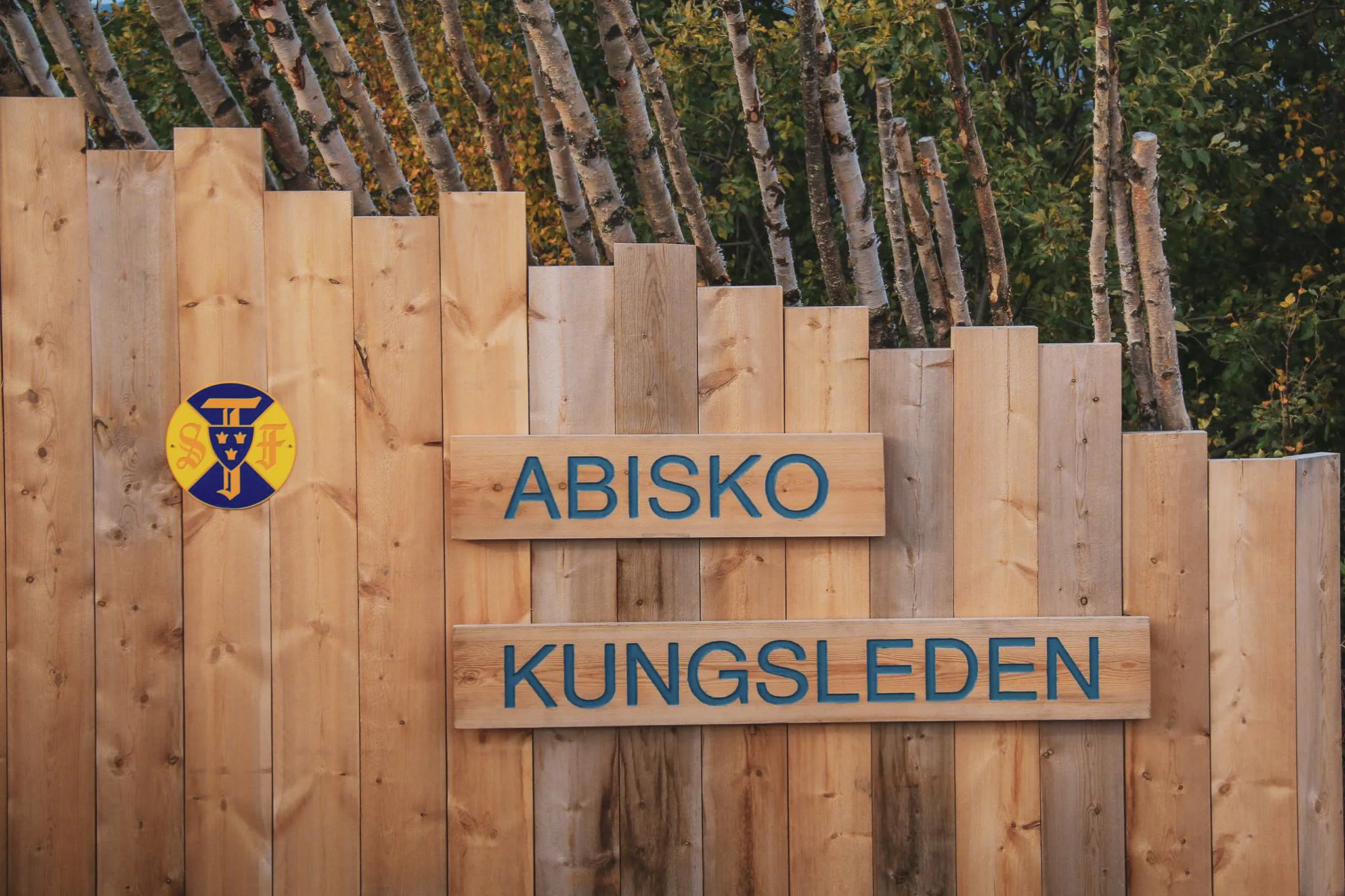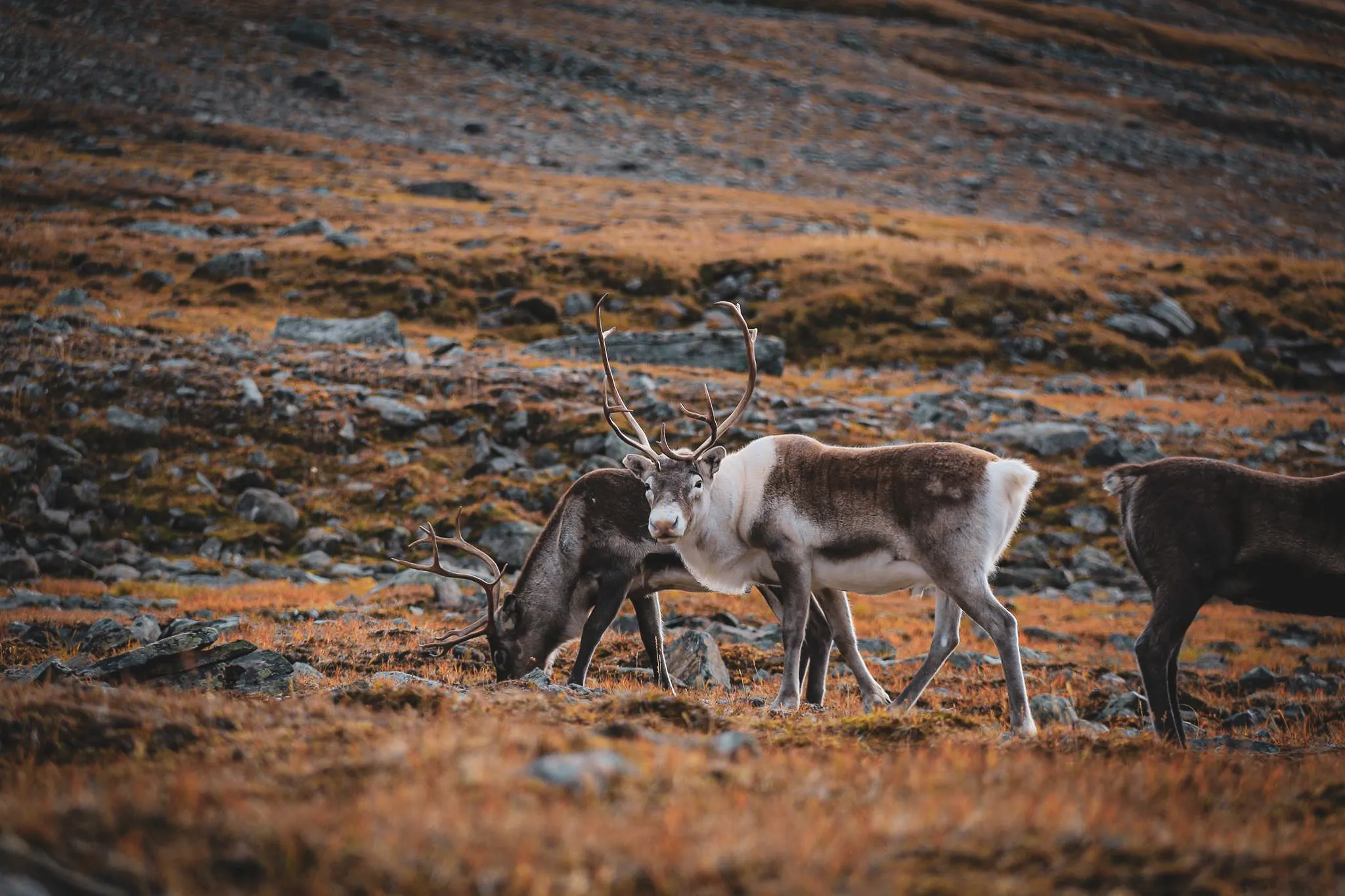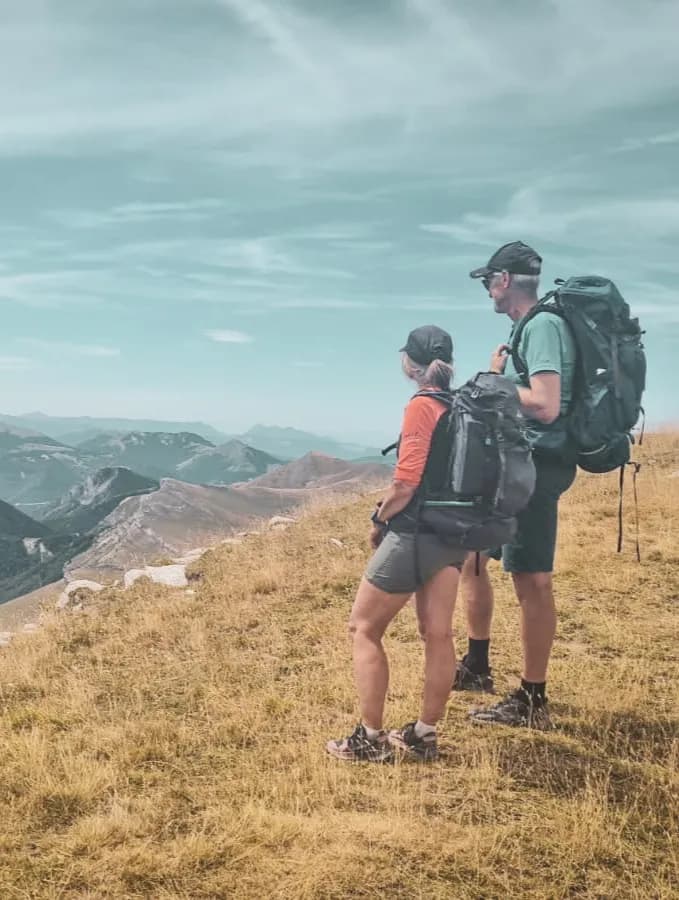Ultimate Guide to Swedish Lapland: Adventure on the Kungsleden Trail
Discover Swedish Lapland along the iconic Kungsleden Trail. Everything you need to know about adventure, routes, gear, and sustainable travel. Read it all here!

Swedish Lapland offers vast landscapes of rugged mountains, crystal-clear lakes, and endless coniferous forests. Hikers come here for the peace, fresh air, and the chance to witness the Northern Lights or the Midnight Sun. The abundance of space and tranquility makes this region a favorite among nature lovers.
The Kungsleden Trail: Sweden’s iconic adventure
The Kungsleden Trail (or “King’s Trail”) is one of the most famous hiking routes in Europe. Stretching about 440 kilometers from Abisko in the north to Hemavan in the south, it runs through the heart of Swedish Lapland. Along the way, you’ll encounter mountains, rivers, and vast stretches of tundra. The trail is set up for both long treks and shorter hikes, with huts for overnight stays and well-marked paths.
For those who want to share the adventure and benefit from local expertise, guided group hikes are available, particularly through the organization Wildhartt. This allows you to explore the wonders of Swedish Lapland safely and peacefully, and to experience the beauty of the Kungsleden Trail together.
What makes the Kungsleden Trail so unique
The Kungsleden Trail in Swedish Lapland is renowned for its untouched nature and deep silence. The path winds for over 400 kilometers through mountains, tundra, and pristine lakes. Hikers can go days without seeing any signs of human activity, only breathtaking views and the sound of wind or flowing water.
A total immersion in nature
Along the trail, wide valleys, rocky ridges, and ancient forests unfold one after the other. Each season brings a unique atmosphere to the landscape. In summer, the Midnight Sun and wildflowers fill the scenery with light and color. In autumn, warm hues and stillness dominate. In early autumn or late spring, you might even catch a glimpse of the Northern Lights.
 Peace and freedom
Peace and freedom
You’ll encounter few people on the Kungsleden Trail, especially outside of peak season. This creates a strong sense of solitude and serenity. The huts are simple and spaced along the trail, allowing you to travel light while staying close to nature. Those hiking with Wildhartt can rely on knowledgeable guides who will lead you to the trail’s hidden gems while preserving your sense of freedom.
Culture and tradition
The trail crosses through the homeland of the Sámi people, the Indigenous people of Lapland. This adds a cultural dimension to the journey. You may see reindeer and observe how nature is central to their traditional way of life. Altogether, the Kungsleden Trail offers a unique blend of nature, calm, and culture, a place where you can truly reconnect with yourself.
Best time to visit & climate in Swedish Lapland
The climate and seasons heavily influence your experience on the Kungsleden Trail. The most popular months to hike are June through September. During this period, the days are long, nature is at its most vibrant, and most mountain huts are open.
Seasons and weather conditions
- June & July: The Midnight Sun provides nearly 24 hours of daylight. Snow may still be present at higher elevations. Temperatures range from 5 to 15°C. Mosquitoes are common in July.
- August: Often considered the best compromise between stable weather and fewer insects. Trails are mostly snow-free. Average temperatures range from 8 to 18°C.
- September: Autumn colors appear. Temperatures drop (2 to 12°C), and there are fewer hikers. The first snowfall may occur by the end of the month.
The rest of the year, the trail is largely inaccessible due to snow-covered paths and harsh cold. Winter hikes are only suitable for experienced adventurers with proper gear.
For the best experience, choose a time that matches your preferences for daylight, temperature, and crowd levels. With Wildhartt, you can easily join a group during the ideal season, no need to worry about local logistics or last-minute planning.
Preparation: equipment and safety
Good preparation is essential for a safe and enjoyable trek on the Kungsleden Trail. You’ll need gear suited to the often-changing conditions of Swedish Lapland, where the weather can quickly shift from sunny to rainy, cold, or windy.
Essential gear for the Kungsleden Trail
- Waterproof, breathable hiking boots with high ankle support
- 50–70 liter backpack with a rain cover
- Layered technical clothing: thermal underwear, fleece, windproof and waterproof jacket
- Warm hat and gloves
- Sleeping bag (comfort rating to 0°C) and lightweight sleeping mat
- Lightweight tent (if not using huts)
- Stove, lighter, and fuel
- Reusable water bottle or water filter
- Food for the hike: freeze-dried meals, energy bars, nuts
- First aid kit including blister plasters
- Emergency whistle and headlamp or flashlight
- Food and Water
Some huts offer basic food supplies, but it’s best to be self-sufficient. Bring lightweight, high-energy foods that are easy to prepare. You can drink directly from streams and lakes, but a water filter or purification tablets provide extra safety.
Safety Tips for a Peaceful Hike
Check the weather forecast before you leave and adjust your itinerary accordingly.
- Inform your loved ones of your route and estimated arrival time.
- Bring a map and compass, or a reliable GPS device.
- Respect nature and weather conditions, and use shelters in case of bad weather.
- Prefer hiking in a group or with company? With Wildhartt, you set out with experienced guides who know the area and local conditions well.
Good preparation makes all the difference. Don’t carry more than necessary, but be ready for cold, rain, and remote areas. That’s how you’ll fully enjoy the Kungsleden Trail.
Route Overview: The Most Beautiful Sections of the Kungsleden Trail
The Kungsleden is divided into four main sections, each with its own character, landscapes, and points of interest. You can hike the entire trail or choose a section, offering great flexibility for both beginners and seasoned hikers.
Most Popular Stages:
- Abisko – Nikkaluokta (approx. 105 km): The most popular section. It runs alongside Abisko National Park and through tundra plains and past Kebnekaise, Sweden’s highest mountain. The midnight sun in summer is breathtaking.
- Nikkaluokta – Kvikkjokk (approx. 180 km): A wilder and more remote section with valleys, forests, and marshlands. This part captures the true tranquility of the North.
- Kvikkjokk – Ammarnäs (approx. 160 km): Less frequented, with steep mountains and many water crossings—some requiring a bridge or boat.
- Ammarnäs – Hemavan (approx. 78 km): The southern section is well-marked and accessible to many hikers. Expect vast panoramas and alpine meadows blooming in July and August.
Simple huts managed by the Swedish Tourist Association (STF) are found along the trail. You can combine multiple stages for a multi-day hike or go for the full north-to-south adventure. Wildhartt offers guided options tailored to your timeframe, skill level, and group preferences.

Sustainable Travel in Swedish Lapland
Nature in Swedish Lapland is fragile. Every traveler leaves a footprint, but responsible choices can minimize it. Respecting the landscape, flora, and fauna is essential. Wildhartt is actively committed to sustainable tourism.
- Leave only memories, take nothing with you
- Pack out all your trash, even organic waste like banana peels.
- Use reusable containers instead of disposable plastics.
Minimizing Impact While Hiking
- Stay on marked trails to protect fragile vegetation such as moss.
- Camp only in permitted areas or near huts.
- Use a lightweight stove; avoid open fires to prevent forest fires and ground damage.
- Respect the silence, both wildlife and fellow hikers will thank you.
Transport and Eco-Friendly Choices
Use public transportation to reach the trailhead. Avoid short domestic flights. Trains and buses offer access to many wild areas.
At Wildhartt, group sizes are deliberately small, reducing ecological impact. Guides teach local rules, such as the “right of public access” (allemansrätten), and how to hike without leaving a trace.
Together, let’s protect the unique nature of Lapland, so the magic of the Kungsleden Trail endures for future generations.
Local Culture: Sami Traditions and Hospitality
The Kungsleden Trail crosses the land of the Sami people, the Indigenous inhabitants of Lapland for thousands of years. Their culture is reflected in reindeer herding, traditional clothing, and handicrafts (duodji). Look closely and you may spot Sami tents (kåtas), colorful ribbons, and local art along the trail.

Traditions and Connection to Nature
The Sami live by the rhythm of the seasons. Reindeer are central to their culture, not just as a resource, but also in myths and traditions. Their lifestyle is shaped by seasonal migrations. Respect for nature and sustainable hunting and fishing practices are integral to their way of life.
Hospitality is a key value. Hikers are often welcomed around a fire or at informal stops. Educational visits may include traditional music (joik), smoked reindeer meat tastings, and stories passed down through generations.
Cultural Encounters Along the Trail
Hikers may have the chance to meet Sami people directly. Welcome centers and authentic events showcase their traditions. A respectful attitude allows for a richer experience—not just seeing, but also listening and learning. Wildhartt often includes cultural components in its itineraries, leaving you more connected to the land and its people.
The Group Adventure with Wildhartt
The Kungsleden Trail takes on a new dimension when shared. In small groups, connections form naturally, experiences are shared, and teamwork makes the tough parts easier. Everyone hikes at their own pace, but shared moments by the fire or before a panorama are unforgettable.
The Value of an Experienced Guide
A local or certified guide knows the terrain, the weather, the best spots to rest or camp. They handle planning, share knowledge about nature and culture, and ensure safety in changing conditions. With Wildhartt, you have peace of mind, support for gear, navigation, or local customs.
A Unique Group Experience
Small groups mean personalized attention and a friendly atmosphere. Whether you’re a novice or seasoned trekker, the routes are adapted to various levels. Guides adjust the itinerary according to group needs, keeping the hike enjoyable and rewarding for all.
Hiking the Kungsleden Trail Together Means:
- Building new friendships
- Receiving practical tips
- Deepening your connection with nature and fellow travelers
All you need to do is focus on the next step,everything else is taken care of.
Practical Tips: Accommodation, Navigation, and Transport
Hiking the Kungsleden Trail means simple huts, clear signage, and good transport options. Here are some tips to help plan your logistics.
Accommodation: From Cabins to Tents
STF huts are located every 10–20 km. Bookable via the Swedish Tourist Association, they provide beds, a wood stove, basic cooking facilities, and water from nearby streams. Bring your sleeping bag and food. Wild camping is allowed as long as you’re 150 meters away from huts and outside sensitive areas. A lightweight tent is useful in off-season or if huts are full.
Navigation and Orientation
The trail is well-marked with red and white symbols. In fog or bad weather, a topographic map (Lantmäteriet maps) and compass are essential. If using GPS or a phone, download offline maps. Wildhartt guides help navigate difficult sections and adapt to current conditions.
Transport: Access and Local Travel
- Start: Abisko is accessible by train or bus from Kiruna or Stockholm. Hemavan connects by bus from Umeå.
- Local Transfers: Some sections require boats (rowboat or motorized). Have cash or a card ready.
- Return: Plan your return trip in advance. Extra buses run in high season, but schedules can still be limited.
Good logistics allow you to maximize trail time and avoid surprises.
FAQ – Swedish Lapland & Kungsleden Trail
How accessible is the Kungsleden?
The northern section (Abisko) is easily reached by train and bus. It’s also the most maintained, with many huts. Hemavan (in the south) is reachable from Umeå. Transport is more limited at the start and end of the season.
Do I need to book the huts?
During peak season (July–August), it’s recommended to book via STF. Off-season is more flexible, but visitor numbers are still unpredictable. Wild camping is permitted almost everywhere, except next to huts or on fragile terrain.
What is the difficulty level?
The trail is well-marked and crosses mountain areas. No technical skills are needed, but good physical condition is essential. Some sections may be muddy, near rivers, or steep. Choose parts suited to your level. With a Wildhartt guide, you benefit from constant support and flexibility.
What about water and food?
Lakes and rivers provide clean water, but use a filter or tablets in areas with reindeer grazing. STF huts offer some basics, but bring food for each stage: lightweight, high-energy, and quick to prepare.
Do I need a permit?
No permit is required to hike the Kungsleden. Rules apply within national parks (fires, camping). Follow them for your safety and the environment’s protection.
What wildlife might I encounter?
Reindeer (especially in summer), sometimes moose (more elusive), and rarely predators like bears or lynx. Keep food sealed, respect wildlife—maintain distance, stay calm, and leave no trace.
How should I prepare for the weather?
Be ready for anything: rain, cold wind, sudden drops in temperature—even snow. Check the weather daily, pack waterproof gear, and allow time to shelter. An experienced guide knows the local risks and ensures your safety.
Where can I find more info and guided tours?
Visit the Swedish Tourist Association (STF) or Swedish tourism websites. For a safe, well-prepared trip, Wildhartt offers small-group tours with certified guides—bringing you the best of the Kungsleden: nature, culture, safety, and the inspiration to return.
You might also like these adventures …

Stevenson’s trail: hike with a Donkey through the Cévennes

Hut-to-hut trekking around Monte Viso

Hiking in Mullerthal: Luxembourg's little Switzerland

Hike the Ecrins with a Donkey by your Side

The king's trail: hiking through Swedish Lapland
